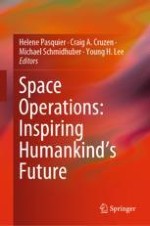2019 | OriginalPaper | Chapter
Use of Terrain-Based Analysis in Mission Design, Planning and Modeling of Operations of a Lunar Exploration Rover
Authors : M. S. Menon, A. Kothandhapani, N. S. Sundaram, S. Nagaraj, A. Gopalan
Published in: Space Operations: Inspiring Humankind's Future
Publisher: Springer International Publishing
Activate our intelligent search to find suitable subject content or patents.
Select sections of text to find matching patents with Artificial Intelligence. powered by
Select sections of text to find additional relevant content using AI-assisted search. powered by
